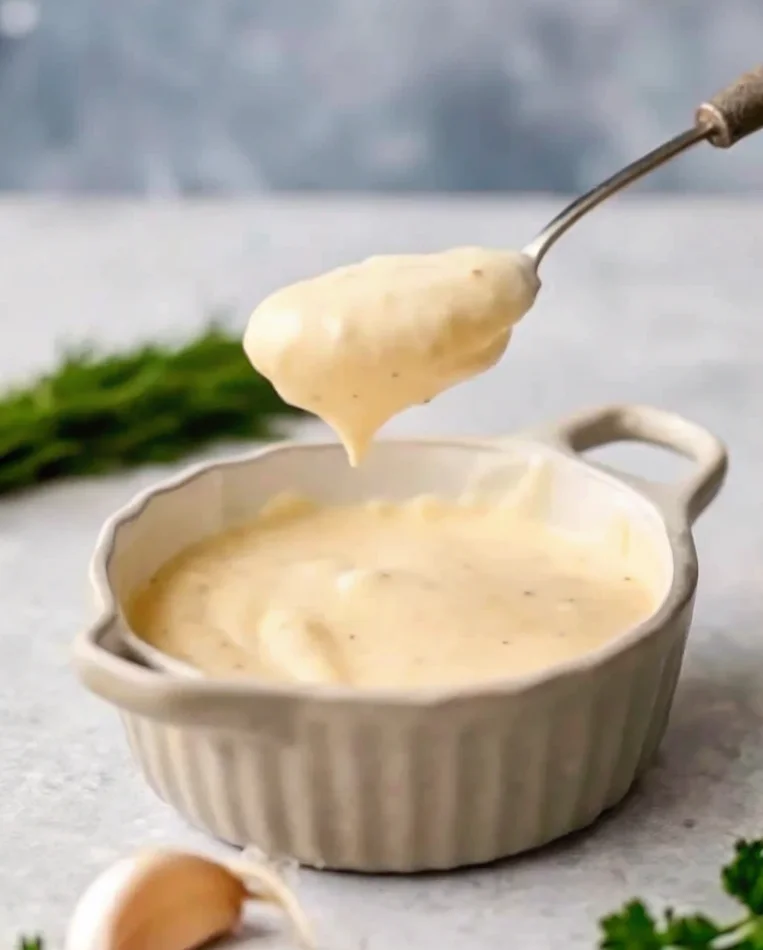Aioli is a rich, creamy, and intensely flavorful garlic-infused sauce with deep roots in Mediterranean cuisine. It originates from the sun-drenched regions of Provence, France, and Catalonia, Spain, where it has been cherished for centuries. This delectable condiment transforms everything from crispy fries and roasted vegetables to grilled seafood and meats, enhancing dishes with its bold yet smooth taste.
While making aioli from scratch may seem intimidating, the process is surprisingly simple and requires just a few ingredients. The result is a far superior sauce compared to store-bought versions, offering a freshness and depth of flavor that is truly unmatched. Whether you prefer it traditional or with a unique twist, this versatile sauce can be customized to suit your taste preferences.
In this guide, we will walk you through a foolproof aioli recipe, providing essential tips, delicious variations, and creative serving suggestions to help you master this beloved classic. Additionally, we will cover the science behind emulsification, troubleshooting techniques, and how to pair aioli with various dishes for the best experience.

Aioli Recipe Details
- Prep Time: 10 minutes
- Total Time: 10 minutes
- Yield: 1 cup
- Category: Condiment
- Method: Whisking or blending
- Cuisine: Mediterranean
- Diet: Gluten-free, dairy-free, vegetarian
- Keywords: Aioli, garlic sauce, homemade aioli, garlic mayonnaise, classic aioli, traditional aioli
Ingredients
To make a classic aioli, you will need:
- 2 large egg yolks (room temperature)
- 2 teaspoons Dijon mustard
- 2 cloves garlic, finely minced or grated
- 1 tablespoon fresh lemon juice
- 1 cup extra virgin olive oil
- 1/4 teaspoon salt (or to taste)
- 1/4 teaspoon freshly ground black pepper (optional)
Equipment Needed
- Mixing bowl
- Whisk (or food processor/blender for a quicker method)
- Garlic press or microplane grater
- Measuring spoons and cups
- Small jar or airtight container for storage
Step-by-Step Instructions
Step 1: Prepare the Ingredients
Ensure all ingredients are at room temperature. This helps with emulsification and prevents the sauce from breaking. Finely mince or grate the garlic using a microplane to create a smooth paste.
Step 2: Combine Egg Yolks and Mustard
In a mixing bowl, whisk together the egg yolks and Dijon mustard until well combined. This mixture acts as the base that helps the oil emulsify properly.
Step 3: Add Garlic and Lemon Juice
Whisk in the minced garlic and fresh lemon juice. The acidity of the lemon juice helps balance the richness of the sauce while brightening the flavors.
Step 4: Slowly Incorporate the Olive Oil
Very slowly, drizzle in the olive oil while whisking constantly. Begin with just a few drops at a time to ensure the mixture emulsifies properly. As the mixture thickens, you can increase the flow of oil to a thin stream, continuing to whisk vigorously.
Tip: If using a food processor or blender, keep the motor running while slowly drizzling in the oil.
Step 5: Season and Adjust
Once the aioli reaches a thick, creamy consistency, season it with salt and black pepper to taste. Give it a final whisk to fully incorporate the flavors.
Step 6: Store or Serve Immediately
Transfer the aioli to a small jar or airtight container. It can be used immediately or stored for later use.
Tips for Perfecting Aioli
- Use room-temperature ingredients to help with emulsification.
- Always add the oil slowly to prevent the sauce from breaking.
- If the aioli appears too thick, add a teaspoon of water or lemon juice to loosen it.
- Use high-quality olive oil for the best flavor.
- If the aioli separates, start fresh with a new egg yolk and slowly whisk the broken aioli into it.
- Whisk vigorously to incorporate air, making the aioli lighter in texture.
Variations
Aioli can be customized in numerous ways to suit different flavors and dishes. Here are some popular variations:
1. Spicy Aioli
Add 1 teaspoon of hot sauce or 1/2 teaspoon of cayenne pepper for a spicy kick.
2. Lemon Herb Aioli
Mix in 1 tablespoon of chopped fresh herbs such as parsley, basil, or chives for a fresh, aromatic twist.
3. Roasted Garlic Aioli
Instead of raw garlic, use roasted garlic for a sweeter, milder flavor.
4. Truffle Aioli
Add 1 teaspoon of truffle oil for an earthy, umami-rich variation.
5. Saffron Aioli
Steep a pinch of saffron threads in warm water before mixing into the aioli for a Mediterranean-inspired version.
Conservation and Storage
- Store aioli in an airtight container in the refrigerator.
- It stays fresh for up to 5 days.
- Avoid freezing, as the texture may break upon thawing.
- Always use a clean spoon to scoop out portions to prevent contamination.
Serving Suggestions
Aioli pairs beautifully with a variety of dishes. Here are some ways to enjoy it:
- Dipping sauce for French fries, sweet potato fries, or roasted vegetables.
- Spread for sandwiches and burgers for an added layer of flavor.
- Drizzled over grilled seafood, such as shrimp, salmon, or cod.
- Accompaniment to grilled meats, including steak and chicken.
- Served with tapas, such as Spanish patatas bravas.
- As a dressing for grain bowls, salads, or wraps.
- Paired with fresh crudité, including carrots, bell peppers, and cucumbers.
Frequently Asked Questions
1. Can I make aioli without eggs?
Yes, you can make vegan aioli by substituting egg yolks with aquafaba (chickpea brine) or using a base of vegan mayonnaise.
2. What is the difference between aioli and mayonnaise?
Traditional aioli is made solely from garlic and olive oil, while mayonnaise includes egg yolks and a neutral oil. However, modern aioli recipes often include egg yolks, making them very similar to mayonnaise but with a pronounced garlic flavor.
3. How do I fix a broken aioli?
If the aioli separates, start with a fresh egg yolk in a clean bowl, then slowly whisk in the broken aioli to re-emulsify.
4. Can I use a different oil instead of olive oil?
Yes, but it will alter the flavor. For a milder taste, use a neutral oil like canola or sunflower oil.
5. Is aioli safe to eat raw?
Yes, but since it contains raw egg yolks, it should be consumed fresh and stored properly. If concerned about raw eggs, use pasteurized eggs.
Conclusion
Homemade aioli is a versatile and flavorful condiment that can elevate a wide range of dishes. Whether you’re using it as a dip, spread, or accompaniment, its creamy texture and bold garlic flavor make it a kitchen essential. With this easy-to-follow recipe, you can create your own aioli tailored to your taste. Experiment with different variations, store it properly, and enjoy the depth of flavor that only homemade aioli can provide.

How to Make Aioli: A Classic Aioli Sauce Recipe
- Total Time: 10 minutes
- Yield: About 1 cup 1x
Description
Aioli is a creamy, garlicky sauce that originated in the Mediterranean, often used as a dip, spread, or accompaniment to seafood, vegetables, and grilled meats. This homemade aioli is easy to make and packs rich flavor.
Ingredients
- 2 garlic cloves, minced
- 1 egg yolk
- 1 teaspoon Dijon mustard (optional)
- 1 tablespoon lemon juice
- ½ cup extra virgin olive oil
- ½ cup neutral oil (such as canola or grapeseed)
- Salt to taste
Instructions
- In a medium bowl, whisk together the minced garlic, egg yolk, Dijon mustard (if using), and lemon juice.
- Slowly drizzle in the oils, a few drops at a time, while continuously whisking until the mixture thickens and emulsifies.
- Continue adding the oil gradually, whisking constantly, until all the oil is incorporated and the aioli is smooth.
- Season with salt to taste and adjust the lemon juice if needed.
- Store in an airtight container in the refrigerator for up to 3 days.
Notes
- For a more intense garlic flavor, let the aioli sit for an hour before serving.
- If the aioli is too thick, you can thin it with a teaspoon of water.
- To make it in a food processor, blend all ingredients except the oil, then slowly drizzle in the oil while blending.
- Prep Time: 10 minutes
- Cook Time: 0 minutes
- Category: Sauce/Dip
- Method: Emulsification
- Cuisine: Mediterranean
Keywords: aioli, garlic aioli, homemade aioli, classic aioli, Mediterranean sauce, garlic sauce, dipping sauce
